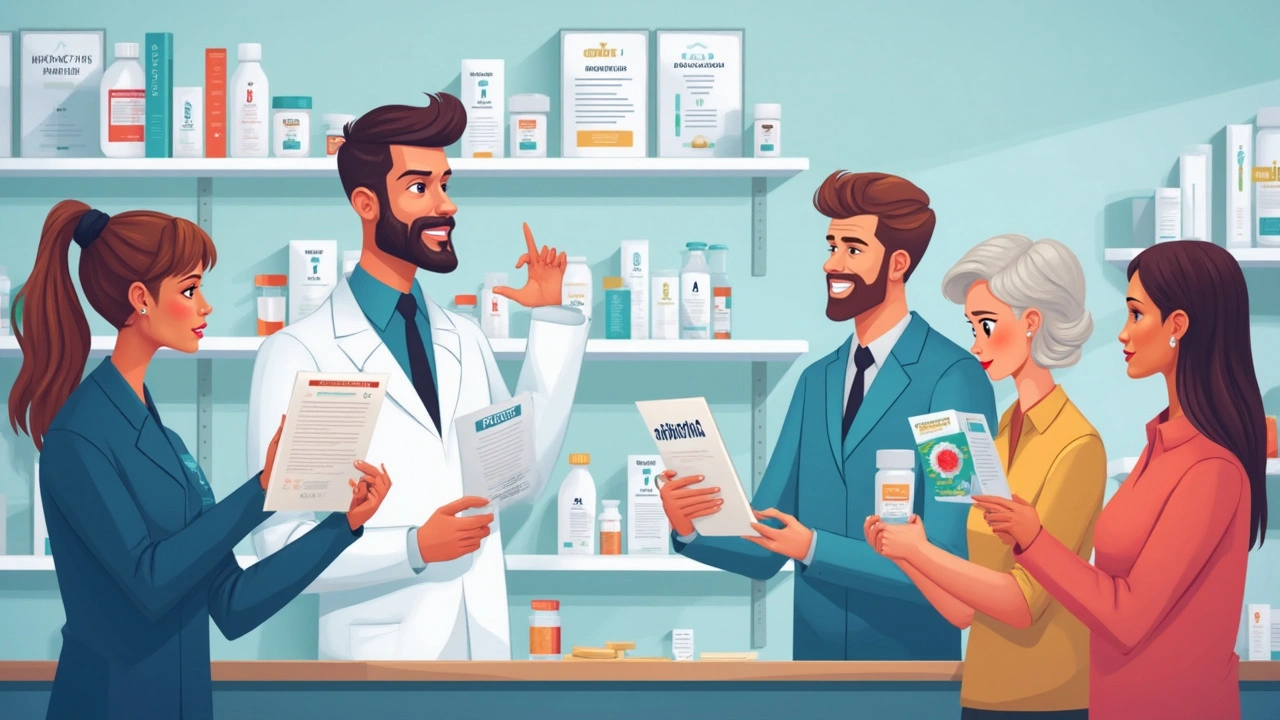Cephalosporin antibiotics: what they do and how to use them safely
Cephalosporins are a big family of antibiotics used for everything from simple skin infections to serious hospital infections. Quick fact: a single shot of ceftriaxone often cures gonorrhea — that shows how powerful some cephalosporins can be. This page helps you understand when they’re useful, what risks to watch for, and how to be safe if you consider buying meds online.
Common cephalosporins and when they’re used
Not all cephalosporins are the same. They’re grouped into generations that shift how well they fight certain bacteria. First-generation drugs like cephalexin (for skin and simple UTIs) focus more on gram-positive bugs. Second-generation (cefuroxime) adds more gram-negative coverage and often treats respiratory infections. Third-generation (ceftriaxone, cefotaxime) are stronger against many gram-negative bacteria and are used for serious infections, meningitis, or gonorrhea. Fourth (cefepime) and fifth (ceftaroline) generation drugs cover even tougher hospital bugs and MRSA in some cases.
When a doctor prescribes a cephalosporin, they pick a specific drug based on the infection and the likely bacteria. Follow the exact dose and length — stopping early can let resistant bacteria survive.
Safety, allergies, and buying tips
Most people tolerate cephalosporins well, but expect possible nausea, diarrhea, or yeast infections. A bigger concern is allergy. If you had a severe penicillin allergy, tell your provider — modern studies put true cross-reaction under 1% for many cephalosporins, but caution still matters. If you’ve had hives or breathing problems after penicillin, your clinician will pick a safer option.
Certain cephalosporins (like cefotetan or cefoperazone) can raise bleeding risk and may cause a disulfiram-like reaction with alcohol. Kidneys clear many of these drugs, so dose changes may be needed in kidney disease. Also, broad use raises the chance of Clostridioides difficile (C. diff) diarrhea — only use antibiotics when they’re clearly needed.
Thinking about buying cephalosporins online? Always use a licensed pharmacy and expect to provide a prescription. Look for clear contact info, verified credentials, and real customer support. Avoid sites that sell prescription antibiotics without any prescription or offer extreme discounts that seem too good to be true. Check expiry dates, batch numbers, and packaging when you get the medicine. If anything looks off, don’t take it and contact the pharmacy.
Final practical tips: never self-diagnose with antibiotics, finish the full course your clinician prescribes, and ask about side effects or interactions with other meds you take. When in doubt, call a pharmacist or your doctor — they can help you pick the right drug and dose for your situation.
If you want, browse our articles for more on specific cephalosporin drugs (cephalexin, ceftriaxone, cefuroxime) and safe online pharmacy practices.
Ciprofloxacin Alternatives: 8 Options and How They Stack Up
Need another option besides Ciprofloxacin? This article breaks down 8 alternative antibiotics used for similar infections, covering how they work, when they're useful, and what side effects to look out for. Get the pros, cons, and my own practical advice on each one. Learn what stands out about each option so you can discuss better choices with your doctor. Simple, to the point, and all about helping you feel more confident next time you hear a long drug name.
© 2025. All rights reserved.

